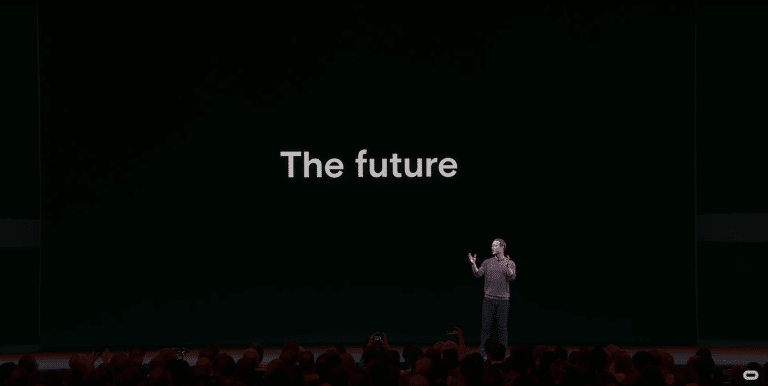
What is aggregation theory? And what does it have to do with spatial computing, such as AR and VR? That’s the topic of this week’s XR Talks (video below). Deviating from our common XR-centric talks, this is a concept that applies across business and tech spheres… including XR.
Starting with the broader definition of aggregation theory, you may know the term. But it’s still one of the most under-exposed phenomena in an otherwise buzzword-happy business environment. It’s a common trait of today’s tech giants and a big reason for their dominance (and defensibility).
First devised by Stratechery’s Ben Thompson, aggregation theory defines the power and leverage held by entities that aggregate large numbers of users on their platforms. This is the case with Facebook’s social graph, Google Search, Apple hardware, and Amazon’s “everything store”.
Demand First
It may sound like an obvious notion, but aggregation theory represents a key shift in supply/demand dynamics. Put another way, it emphasizes demand over supply. Build demand first to gain leverage for whatever your revenue model is….advertising, affiliate revenue, etc.
This demand-first approach means that product quality is foundational. That may sound like another obvious statement. But given that attracting consumers is the driving force, it means that years of building quality and trust is often the only path to aggregation leverage.
Consider Uber. The taxi industry was based on supply aggregation. Taxi companies and their dispatch logistics held all of the leverage in that they supplied a given need — in this case ground transportation. That supply leverage caused product quality to plummet (more on that in a bit).
Uber conversely went straight to the demand side by offering a much slicker product and UX. You know the story….no more hailing cabs, no more “broken” credit card machines, better quality standards and “just walk away” payments. That attracted users which then attracted drivers.
Biggest Virtue
Of course, it’s more complicated and there’s often a slow-moving step function when supply and demand need to ratchet up together. But it starts with the demand side, which necessitates more focus and priority on user experience. This is where aggregation theory’s biggest virtue lies.
Things can go downhill when usage is sustained by factors like switching costs or lock-in. When this occurs, quality erodes as platforms rely on these elements. At that point, it becomes supply leverage. Facebook (and Google to a lesser degree) has moved in this direction over time.
For example, rebuilding your social graph is a switching cost, as is migrating away from Gmail, Drive or any of Google’s loss-leader products that support core search revenues. But to give credit where it’s due, Google search and other core products do have a hard-fought quality lead.
“Hard-fought” is where aggregation theory gets contentious. Do dominating platforms deserve to have such power and leverage? They’ve worked hard to build user bases….and done so through quality (for the most part). The question is if they’ve used that leverage in anti-competitive ways.
And that’s where we are today with antitrust measures bearing down on big tech (political motivations aside). So that brings us to the present. To fully grasp what’s going on in antitrust suits against Facebook, Google and others first requires examining aggregation theory.
Spatial Implications
So what does all of this have to do with spatial computing? As mentioned, this is one of those fundamental business principles like the long tail or the innovator’s dilemma. So it applies to XR with that broad brush, in that spatial computing follows universal business fundamentals.
But a more direct relationship comes from spatial computing’s current reliance on tech giants. The big five — Google, Apple, Amazon, Facebook and Microsoft — are essentially funding the AR and VR sectors as we know them. They’re making big future bets which they can afford to do.
This means that much of the capital being pumped into the spatial computing sector to get it off the ground (and to plant self-interested stakes of course) comes from these demand-aggregation business models. Will they take the same approach in XR markets? That’s the big question…
We can see some evidence already. Snapchat is the poster child of AR engagement with a trillion cumulative lens views and high-frequency use. The quality experience it’s developed has led to an aggregated audience. And it’s followed that up with ad-based monetization.
The same can be said for Facebook — in AR but more so in VR. It has hit a home run with Quest 2 and continues to invest in an experience that will deservedly attract users. For Facebook, that’s all for the sake of cultivating a network effect — the driving force in its monetization playbook.
More examples can be seen in Google Lens and several AR and VR products that are currently in the stage of aggregating user bases before they flip the monetization switch. We’ll keep our eyes out for more, and you can see the full video below for the basics of aggregation theory.

